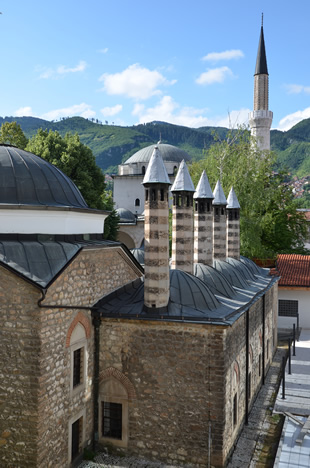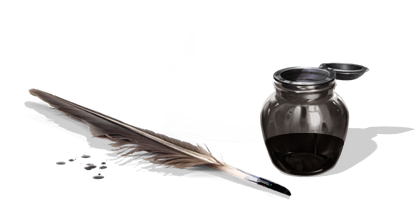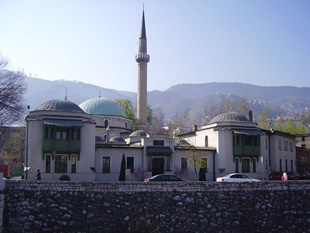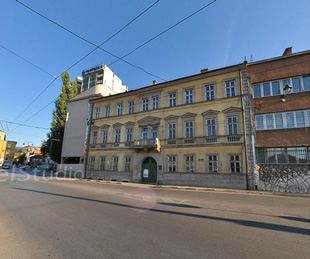History
GAZI HUSREV-BEY
Gazi Husrev-bey, was born around 1480 in Serres, Greece, where his father Ferhad-bey, born in the vicinity of Trebinje, was a regent.
His mother was the daughter of Sultan Bayezid the Second. He grew up at the imperial court. Before coming to Bosnia, he was a regent of Smederevo Sanjak. Gazi Husrev-bey was appointed a Sanjak bey of Bosnia three times: 1521–1525, 1526–1534. i 1536–1541. By buildings he built in Sarajevo and by vakfs he established to maintain his foundation, Gazi Husrev-bey is the greatest and the most significant legator of Bosnia and Herzegovina. Gazi Husrev Bey died in Sarajevo, in 1541 and he was buried in the turbe which he had built during his life, in the courtyard of his mosque.
GAZI HUSREV-BEY’S VAKF
The Gazi Husrev-bey Mosque, the biggest and one of the most beautiful mosques in Bosnia and Herzegovina, was built in 1530-31 (937 by Hijra).
One year later, a maktab was built in the Mosque courtyard and a Hanikah across the street from it. In 1537, the madrasah endowment charter was written for which Gazi Husrev-bey endowed seven hundred thousand dirhams. The madrasah, which was the most important educational institution in Bosnia and Herzegovina during Ottoman period, was named Seljukija, after Gazi Husrev-bey’s mother Seljuka. By its lead roof, the madrasah was also called Kursumlija. In addition to these, Gazi Husrev-bey built imaret and musafirkhana. The funds of his vakf were used for building of a Turkish bath, bazaar, two inns, water supply, a fountain in the Mosque courtyard, public toilet, the clock tower, for which is unknown if it was built during his lifetime or after, as well as muvekithana, in the Mosque courtyard, built in 1859, and a vakf hospital in 1866. which was open all until the General Hospital in Sarajevo was built in 1882. To maintain these buildings, Gazi Husrev-bey donated around two hundred shops in the Sarajevo market, huge land compounds around the town of Jajce, and forests in Tešanj. He also left vakfs in Serres and certain amounts of turnover money. Income from bazaars, inns, and Turkish baths was used to keep the vakf buildings operational.
LIBRARY
Gazi Husrev-bey Library in Sarajevo is the first library whose exact date of establishment is known.
The endowment charter of Gazi Husrev-bey for his madrasah states that “whatever is left from madrasah construction expenses is to be used for purchase of good books that shall be read in the madrasah and rewritten by readers interested in science”. Therefore, Gazi Husrev-bey Library dates as back as the madrasah, i.e. since 1537. Until 1863, the Library existed within Kuršumli madrasah. That year, at the initiative of Topal Osman Pasha, the Governor of Bosnia, Gazi Husrev-bey’s vakf built a large room next to Bey’s mosque to be used for the library. It stayed there until 1935 when, due to enlarged library fund, it was moved to the premises in front of Emperor’s Mosque and remained there until the beginning of aggression against Bosnia and Herzegovina in 1992.
In April 1992, for security reasons, it was distributed to various locations in town. During the four-year period of war, the funds of the library were being moved few times from one location to another thanks to which they were completely preserved. After the aggression against Bosnia and Herzegovina, the Library was placed in the building near women’s department of Gazi Husrev-bey madrasah at 58 Hamdije Kreševljakovića Street where it remained until 2013. Today, Gazi husrev-bey Library is located in the heart of Old Town, at 46 gazi Husrev-bey Street, where a superb building was constructed specifically for this purpose. The opening ceremony of the building which was built and equipped with the financial support by the state of Qatar was held on January 15, 2014. The building is located next to the west wall of Kuršumli madrasah. The Library has in this way been brought back to its original home, to the place where it was founded, within the complex of Gazi Husrev-bey’s vakf.
Gazi Husrev-bey Library currently holds around one hundred thousand units including over 10.500 codices of manuscripts in Arabic, Turkish, Persian and Bosnian languages, around 9 and 10 thousands individual documents in Ottoman Turkish language, approximately 21.000 printed books in Oriental languages and over 30.000 in European languages, as well as rich collection of periodicals from the end of 19th century to the contemporary magazines that are being published in Bosnia and Herzegovina and in the world. The Library also has a valuable museum collection and collection of photographs and postage stamps.







